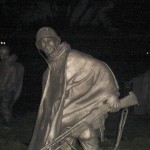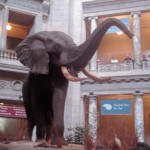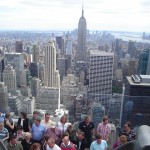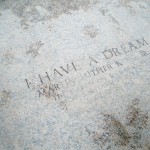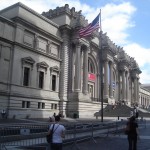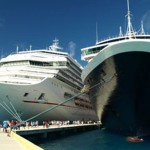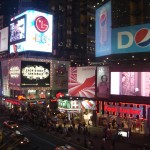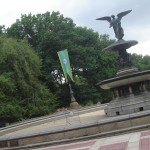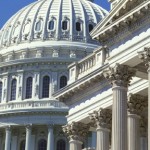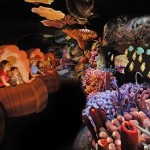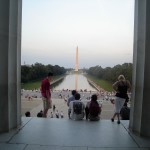 Washington DC’s attractions can largely be categorized under two headings: Government and the National Mall. This beautiful park was always designated as an extended lawn to Capitol Hill and as the wide open space for numerous national monuments and memorials. Along the edges of the Mall, you’ll find the most extensive museum complex in the world. Here are the many parts to the National Mall, those that draw millions of visitors every year, and the many reasons the Mall should be included in any school travel itinerary.
Washington DC’s attractions can largely be categorized under two headings: Government and the National Mall. This beautiful park was always designated as an extended lawn to Capitol Hill and as the wide open space for numerous national monuments and memorials. Along the edges of the Mall, you’ll find the most extensive museum complex in the world. Here are the many parts to the National Mall, those that draw millions of visitors every year, and the many reasons the Mall should be included in any school travel itinerary.
Presidents
The presidential monuments and memorials are some of the most familiar DC sights. The Lincoln Memorial is a favorite and perhaps the most familiar of all. Students recognize it from the back of pennies and five-dollar bills. And they certainly recognize it from their history books – not just as the resting place for the larger-than-life statue of a seated President Lincoln and for inscriptions of his famous words, but as the scene for powerful moments in history, including the civil rights march on Washington that led to the influential speech by Martin Luther King, Jr., “I have a dream.” Seated in a chamber where you’ll find his Gettysburg and Second Inaugural addresses inscribed, President Lincoln is one of our most beloved presidents. His memorial inspires reflection and a hushed respect by all who visit.
The Washington Monument stands tall and proud in the center of the Mall and as a visible landmark throughout the capital city. In its base you’ll find museum exhibits on the famous first President. At the top, visitors love the view.
The Jefferson Memorial, though set apart along the banks of the Tidal Basin, is also considered part of the National Mall. Built in the temple design also used for Lincoln’s Memorial, Jefferson’s holds a standing statue of the famous philosopher and inscriptions of his famous words. The FDR Memorial rests on the Basin as well. The four rooms in this memorial are dedicated to President Roosevelt’s four terms in office. His Four Freedoms are inscribed, and water fountains refresh the beautiful spaces.
Washington DC honors thousands and thousands of Americans who gave their lives in our military in various wars, World wars, and conflicts. The Vietnam Veterans Memorial is perhaps the best-known design of the many war memorials, the names of its heroes inscribed on a beautifully reflective black wall. The Three Soldiers statue offers another part of this memorial, and a statue dedicated to the women of Vietnam is nearby.
The Korean War Memorial also has many parts. Its reflective wall depicts hundreds of military jobs. Its soldier-statues walk through Korean juniper, their faces vivid with detail. In the shadow of the Washington Monument, the World War II Memorial welcomes visitors to a refreshing fountain. Pillars represent all the US states and territories. Gorgeous wreaths grace the circular memorial. A wall of stars represents the thousands of heroes lost in the war.
The Iwo Jima Memorial depicts one of the most famous war photographs in history, that of several members of the US Marine Corps raising a flag after the Battle at Iwo Jima, a critical base during World War II.
All of the monuments and memorials throughout DC, including the presidential and war memorials listed here, are beautifully lit at night for an Illuminations Tour.
Washington DC is the best choice for educational tours for many reasons, including its wide variety of fascinating museums. Many of these are funded by the Smithsonian Institution, which was founded by the estate of James Smithson, who bequeathed it to the United States for the increase of knowledge. The Institution Smithson’s money founded now includes almost twenty museums, many of which you’ll find in Washington DC. (The Smithsonian includes still more facilities and museum affiliates around the world).
Favorite Smithsonian facilities include the Air and Space Museum. This spacious facility holds walk-through artifacts from air and spacecraft. It also has many fascinating exhibits, a two-story gift shop, and plenty of room for the massive daily crowds. The American History museum showcases presidential memorabilia, fashion, design, tools, and pop culture throughout our history. Other unique Smithsonian facilities celebrate African Art, the American Indian, and American Art – all of which you’ll find surrounding the National Mall.
From the lawn of Capitol Hill on the east to the Lincoln Memorial on he west, the National Mall is a wonderful national landmark, a beautiful park, and the home to many attractions. Students will be moved by its memorials and educated and entertained by the Smithonian museums along its borders.
Read More…
